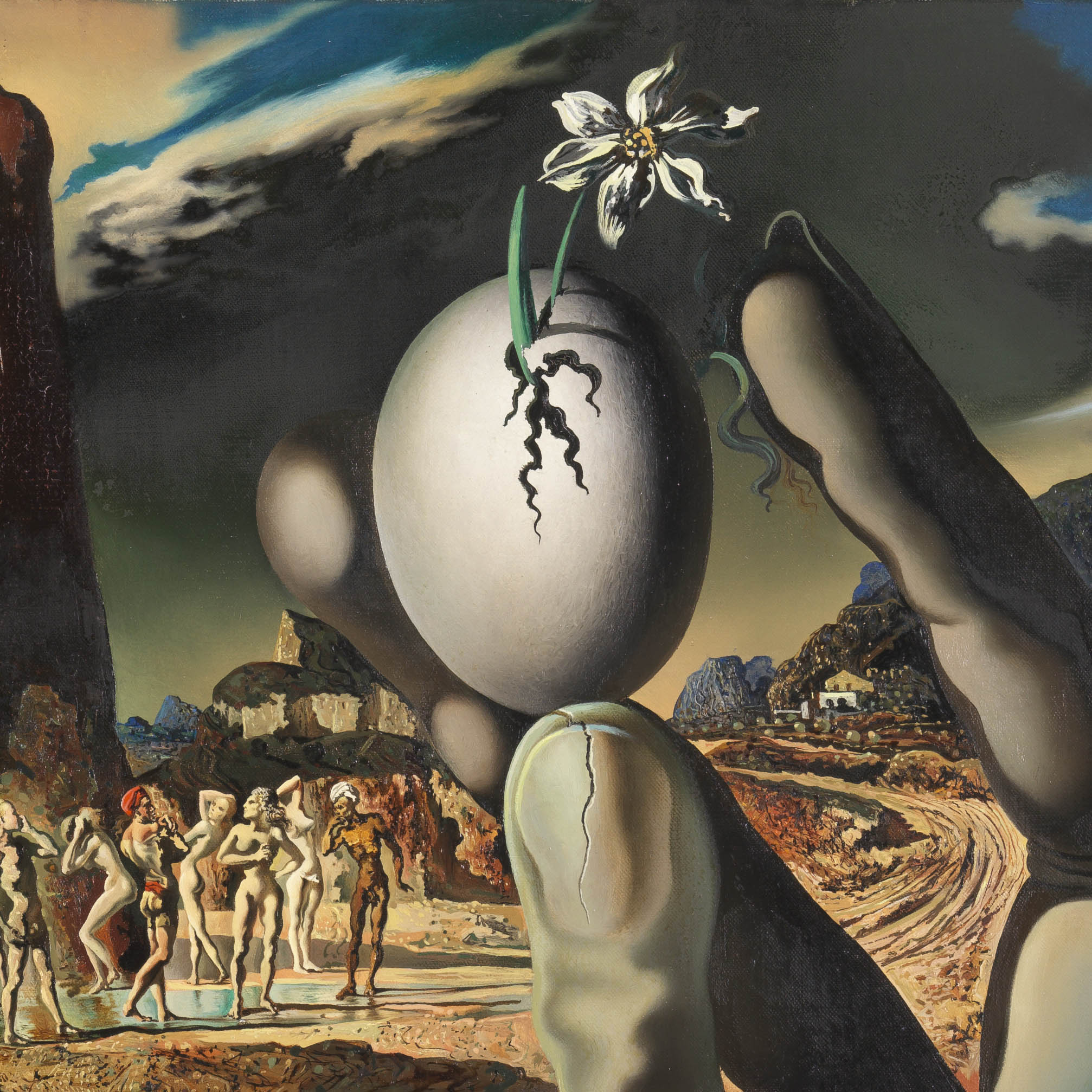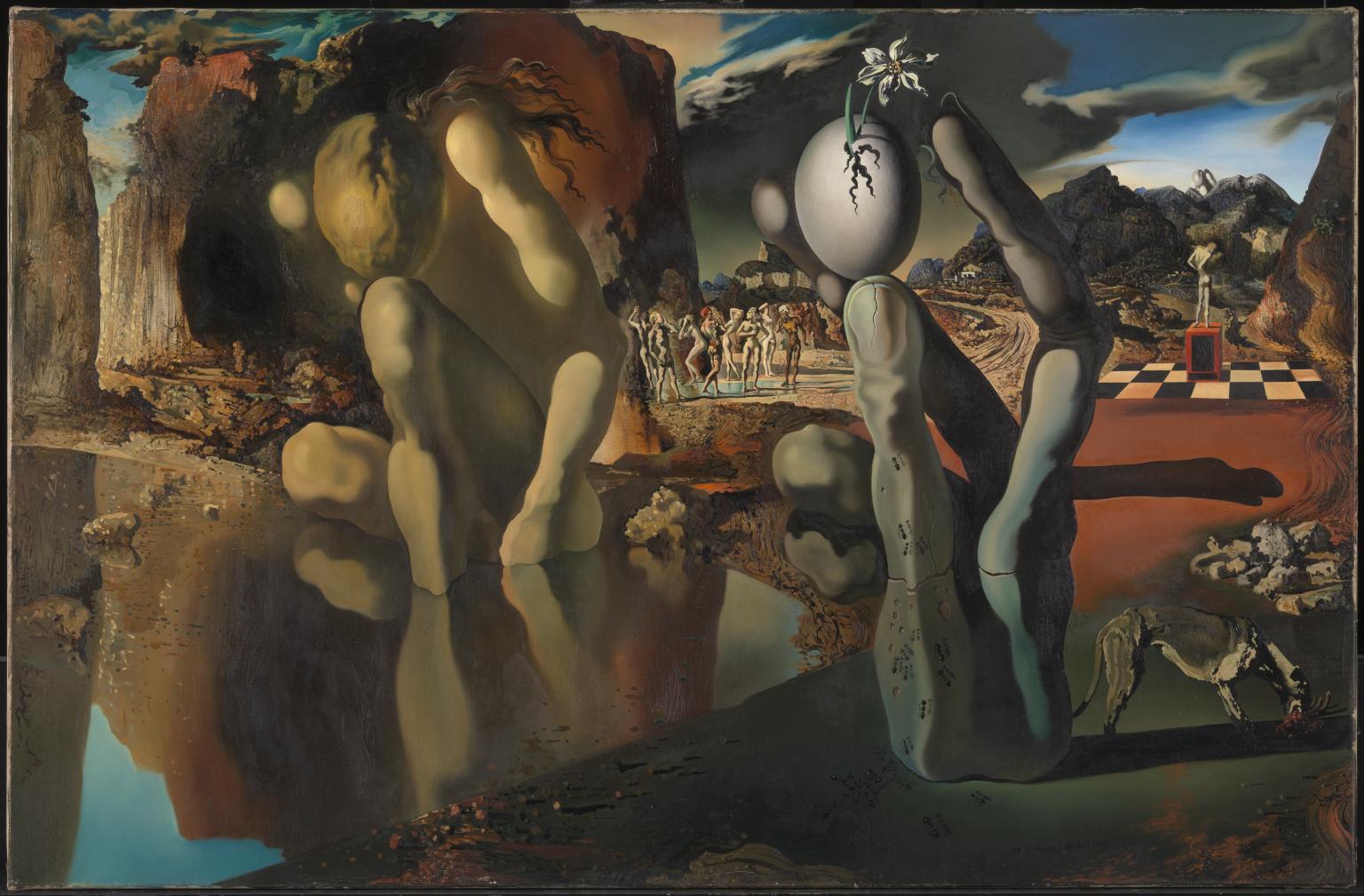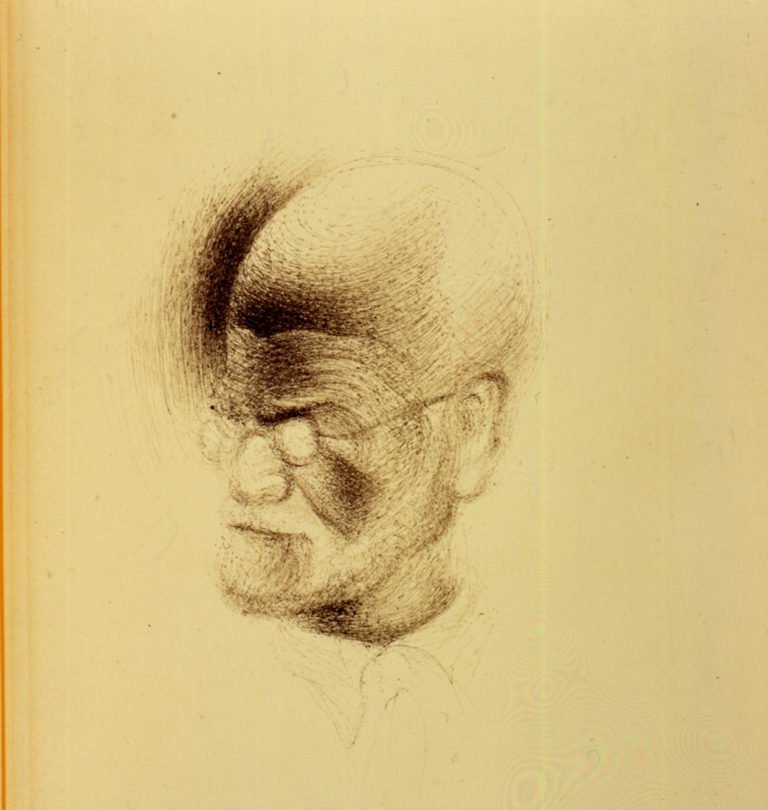Dalí and Freud

Today I present my first article on ArtYorum. When you read the title, you might not have imagined how these two names could come together. Let me tell you how the idea for this article came to mind.
I have been living in London for a few months and have been trying to visit the museums throughout the United Kingdom. While researching online, I came across the Freud Museum London. The first thing that came to mind were snippets of information I had read before. Freud (1856-1939) had come to London as a result of the spread of the Nazi movement in Austria and resided here from 1938 to 1939, dying shortly after. It's only natural that even if a person like Freud lived in your country for just one year, a museum would be built in his honor. I immediately booked a ticket and set off.
As I walked towards the museum after leaving the tube, I entered a quiet neighborhood with very luxurious houses. It was impossible not to admire them. When I reached Freud's house, a wave of excitement washed over me. The creator of psychoanalysis, the famous physician Sigmund Freud, had been in direct contact with the objects I was now touching. Upon entering, you are greeted by a painting of Mount Fuji by the Japanese artist Hiroshi Yoshida, a gift to Freud from the Japanese psychiatrist Heisaku Kosawa. When I saw other works of art on the walls, I thought, "I suppose Freud had an interest in art." The absurdity of this thought struck me immediately. The relationship between psychology-art and psychoanalysis-art had been ingrained in my mind, especially through Jung's book on symbols [2]. After all, wherever there are humans, there are symbols, and wherever there are symbols, there is art.
While Browse the books in the museum shop, a notebook caught my eye, and on it were Salvador Dalí and Sigmund Freud, side by side. At that moment, the idea that a significant relationship must have existed between them struck me. If you know Dalí, you know his connection to dreams as a surrealist. Likewise, I couldn't help but think, "It's impossible that he hadn't read Freud's *The Interpretation of Dreams*." My research proved me right.
I – The Meeting of Freud and Dalí
Freud and Dalí met only once in their lifetimes. Dalí visited Freud just after he had fled to London. Freud was around 82 and Dalí was 34. Freud was one of the most famous intellectuals of the era, while Dalí was establishing his empire in the surrealist movement. Unfortunately, I can't say the meeting went very well.
Like many surrealists, Dalí was obsessed with "the unconscious, sexuality, and dreams." Before meeting him physically, Dalí had already held a conversation with Freud—in his imagination [3]. He arranged a real meeting through the writer Stefan Zweig. However, Freud was an elderly man and artistically conservative. He admired the Renaissance masters and, therefore, did not look warmly upon surrealism. Another reason was personal: André Breton, a pioneer of surrealism, had accused Freud of plagiarism in his book *The Interpretation of Dreams*, and their relationship was tense [4].
Consequently, Freud approached Dalí with skepticism. Let's quote a paragraph from Dalí's autobiography to get an idea of how the meeting went:
"Contrary to my hopes, we spoke little, but we devoured each other with our eyes. As we were leaving, I tried to give him a magazine, begging him to read an article I had written on paranoia. He continued to look at me with his unwavering fixity, and exclaimed, addressing Stefan Zweig, 'I have never seen a more complete example of a Spaniard. What a fanatic!'"
II – The Metamorphosis of Narcissus
Dalí had brought his painting, *The Metamorphosis of Narcissus*, to show Freud. The painting is a surrealist depiction of the Greek myth of the beautiful Narcissus, who falls in love with his own reflection. In one half of the canvas, Narcissus is depicted gazing into the water. In the other half, the same form is repeated, but this time the body has become a hand holding a cracked seed from which a Narcissus flower sprouts. This "double image" was a key feature of Dalí's 'paranoiac-critical' method.

The painting's connection to Freud stems from the concept of "narcissism." Freud defined narcissism as "the desire and energy that drives one's instinct to survive" [6]. Dalí had read and embraced Freud's book, *On Narcissism*. The painting was also accompanied by a poem.
III – The Freud Sketch
In his memoirs, Dalí indicates that the inspiration for this sketch came from seeing a picture of Freud while eating snails in France.
"I let out a loud cry. I had just discovered Freud's morphological secret! Freud's skull is a snail! His brain is in the shape of a spiral!" [9]

The connection between surrealism, the unconscious, and dreams is not difficult to see. It is no coincidence that the leading figures of surrealism admired Freud. His cognitive revolution revealed many truths to us, and it is clear he was a source of inspiration for the surrealists, especially on the subject of sexuality. The relationship between Dalí and Freud offers us a different perspective on the private lives of famous people we know separately. Some names we would never expect have had direct contact. See you in the next post. I wish you days full of art.
References and Footnotes
- Hokusai, Thirty-six Views of Mount Fuji, 1830-1832: A series of 36 prints depicting Mount Fuji from different locations. One of the most famous, The Great Wave off Kanagawa, influenced the course of art history.
- Carl Gustav Jung, Man and His Symbols, 1964: Published as Jung's final work. Jung explains that symbols are expressed in geometric forms, in humans, demigods, gods, animals, and plants.
- The Secret Life of Salvador Dalí, Salvador Dalí, 1942, pp. 30-31: “I remember with a gentle melancholy spending those afternoons walking haphazardly along the streets of Austria’s ancient capital...”
- Freud Museum London, When Freud met Dalí. I should note here that according to some sources, Breton was a great admirer of Freud, which is not hard to understand. However, according to other sources, their relationship was quite strained.
- Rosa Maria Maurell, 2005. “Dalí and the Myth of Narcissus”. El Punt.
- Sigmund Freud, On Narcissism: An Introduction, 1914
- La Metamorfosis de Narciso/ The Narcissus’s Metamorphosis, Salvador Dalí
- Tate. “‘Metamorphosis of Narcissus’, Salvador Dalí, 1937.” Tate. 2020
- Web source, Freud Museum London, When Dalí met Freud
Web Sources:
- Tate Modern, Metamorphosis of Narcissus, https://www.tate.org.uk/art/artworks/dali-metamorphosis-of-narcissus-t02343
- Freud Museum London, When Dalí met Freud, https://www.freud.org.uk/2019/02/04/when-dali-met-freud/
- Sigmund Freud, Dalí Museum, https://thedali.org/dali-library-guide-1/sigmund-freud/